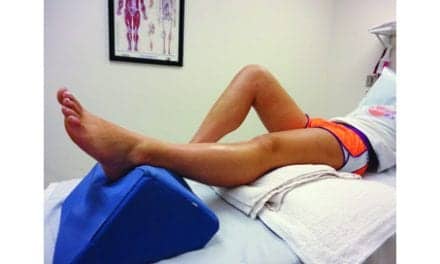Spaulding Rehabilitation Hospital, a teaching affiliate of Harvard Medical School, and Highland Instruments Inc (Highland) announce the advancement into Phase II of their National Institutes of Health (NIH) funded Clinical Trial investigating Highland Instruments’ Electrosonic Stimulation (ESStim), a novel noninvasive brain stimulation technology, to treat Carpal Tunnel Syndrome.1
The double-blinded randomized controlled trial is an NIH Small Business Innovative Research (SBIR) Phase II grant funded study that follows the successful results of Highland’s recent NIH funded Phase I Carpal Tunnel Syndrome study that investigated the use of ESStim in improving chronic pain and physical function in Carpal Tunnel Syndrome patients. In the Phase I trial, Carpal Tunnel Syndrome patients demonstrated statistically and clinically significant improvements in pain, function, and other clinical metrics key to Carpal Tunnel Syndrome treatment. The Phase II SBIR studies will build upon the Phase I SBIR results, investigating a larger patient pool, extending the period of treatment and observation, and examining additional ways to augment ESStim therapy for Carpal Tunnel Syndrome.
Professor Felipe Fregni, MD, PhD, MMSc, MPH, MEd, (Spaulding Rehabilitation Hospital trial site Principal Investigator, Professor, Harvard Medical School) states, “Our recent Carpal Tunnel Syndrome studies reinforce the great results with ESStim that we have observed across the chronic pain and movement disorder indications. The Phase I Carpal Tunnel Syndrome Randomized Controlled Trial results demonstrated clinically and statistically significant improvements in pain and function in the Carpal Tunnel Syndrome patients. The Phase II trial that we now have underway will build upon these earlier studies.”
About Carpal Tunnel Syndrome
Carpal Tunnel Syndrome affects up to 3.8% of the United States population, with higher prevalence in the working population, and US direct costs exceeding $2B/yr.2 Chronic pain is one of the most common and difficult to treat complications of Carpal Tunnel Syndrome. Surgical interventions are becoming less common early in the course of therapy, can be less cost-effective than other therapies,3 and can have limited effect in patients with neuropathic pain in Carpal Tunnel Syndrome.4
References
1 Research reported in this publication was supported by the National Institute of Arthritis and Musculoskeletal and Skin Diseases of the National Institutes of Health under Award Number R44AR076885. The content is solely the responsibility of the authors and does not necessarily represent the official views of the National Institutes of Health.
2 https://www.ncbi.nlm.nih.gov/pmc/articles/PMC3314870/
3 https://pubmed.ncbi.nlm.nih.gov/30501389/
4 https://www.ncbi.nlm.nih.gov/pmc/articles/PMC5610835/
5 Electrosonic Stimulation is protected by patents, both issued and pending.
[Source(s): Highland Instruments Inc, PR Newswire]





